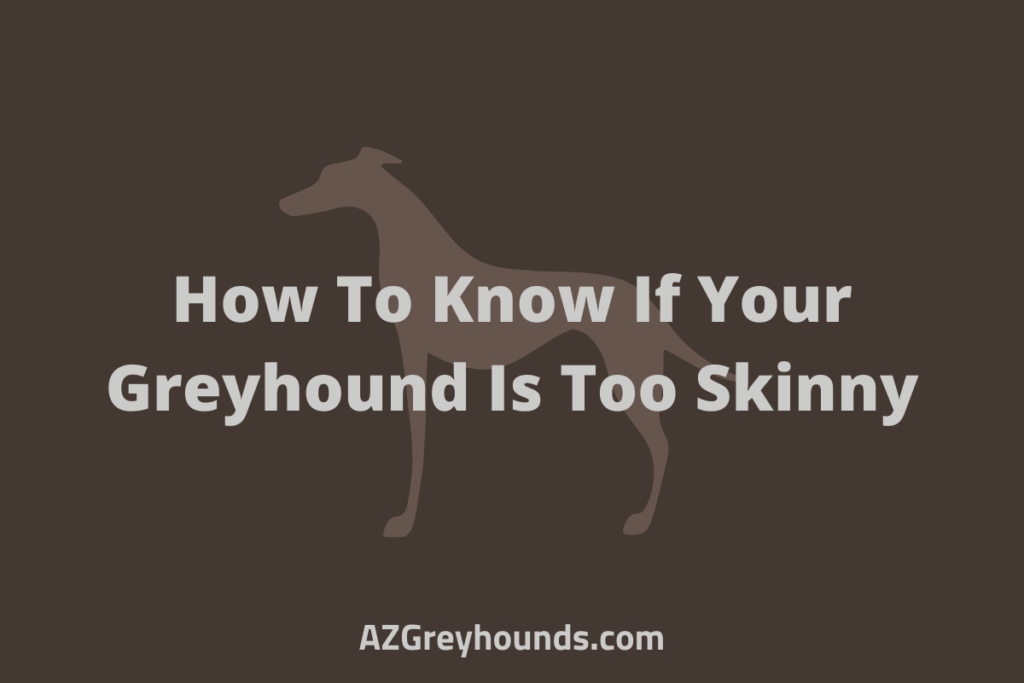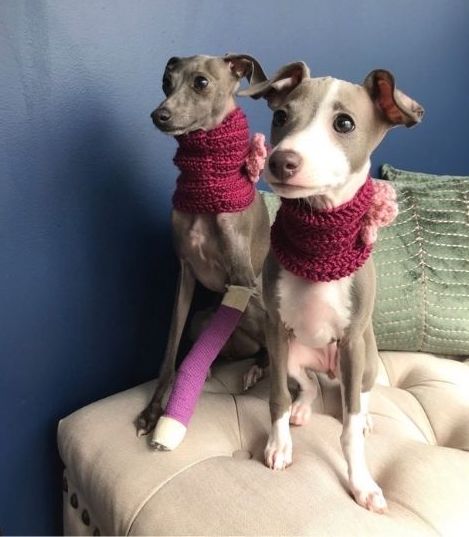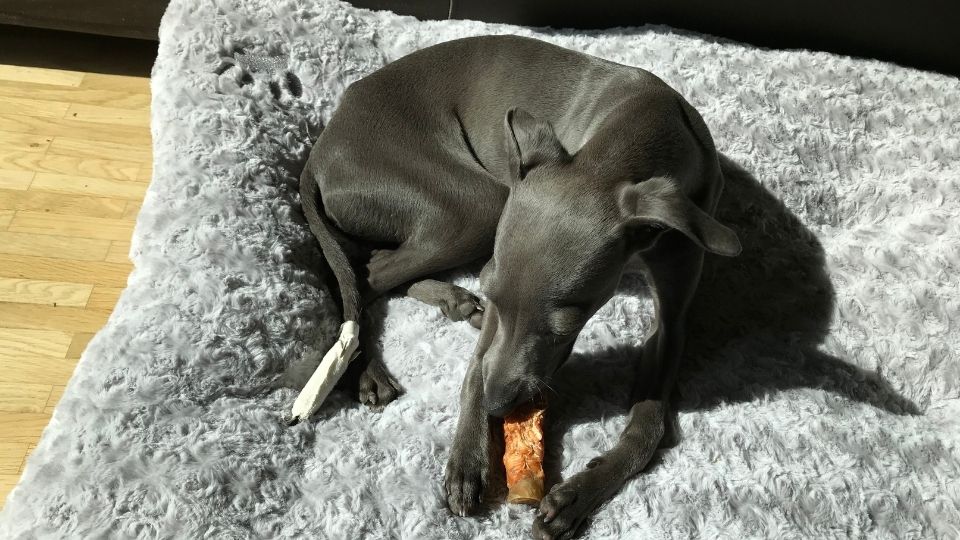How To Know If Your Greyhound Is Too Skinny

Greyhounds should naturally weigh around 36-40 kg for a male and up to 30-34 kg for a female.
It’s common for people to think that this weight is too skinny based on their appearance, and many owners are tempted to ‘fatten up’ their greyhound using high-fat content foods.
To tell if your greyhound is truly too skinny, you’ll need to look closely at some of its features:
If you stand behind your greyhound, you should see that its waist gradually pulls in from its ribs at a curving angle.
If you notice that their hip bones are overly exposed, making the shape square and straight, it could mean that your greyhound is too skinny.
Despite their extremely skinny physique, you shouldn’t be able to see the spine of your greyhound in great detail.
Their spine is flexible, giving them the power to move their whole body when running to accommodate longer strides.
However, their spine should seem like a smooth line. If you run your hand along your greyhound’s back lightly, you shouldn’t be able to pick out the individual vertebrae there.
But if you can feel individual bones, they may be too skinny. And if you can see the bones protruding from a distance, they’re definitely too skinny, and you might even need to seek veterinary assistance.
Looking at your greyhound from the side, you should see a smooth curve from its ribcage up to its abdomen, where its body meets its hind legs.
If the line is more angular, creating a corner from the ribcage to their hind legs, then they’re probably too skinny.
Using a ribcage is a difficult way to tell if your greyhound is underweight, as you will be able to see its ribs anyway, due to its body shape.
However, it’s a great way to tell if they’re gradually losing weight over time by comparing the ribs to what they used to look like. The ribcage itself will always be visible.
You’ll be able to feel the individual ribs relatively easily; however, you shouldn’t be able to see each individual rib from a distance. Noticeably protruding ribs can be a sign that your greyhound is losing weight.
A greyhound’s thin skin should cling perfectly to its muscles. If you notice that the skin is falling more loosely, most often around the abdomen and shoulders, it may be a sign of muscle loss.
The skin won’t shrink with the muscles, so it becomes looser and easier to pull away from the body.
Common Reasons For Greyhound Weight Loss

Sharing Food – If you have more than one dog, it could be that the other dog is eating more than their fair share of food. Try to feed them separately for a while to see if this makes a difference.
Age – Greyhounds, like all other animals, gradually lose weight when they’re older. It’s a natural part of the aging process.
As a result, they may gain digestive issues and might lose their appetite if they don’t have a lot of energy. Switch to shorter walks to help them keep their energy levels up. This will encourage them to eat more.
Thyroid Issues – Having an overactive thyroid can waste the calories that your greyhound is taking on without them having to expel any energy. This is normally a genetic trait and can usually be fixed with medication.
Pain – If there’s something wrong internally, your greyhound may stop eating because they’re in pain or because they feel uncomfortable.
Check inside their ears and mouth for any infections or injuries. If you’re unable to see anything obvious, take a trip to the vet for a diagnosis.
Italian Greyhound Leg Breaks and Other Fractures
Probably one of the health conditions feared the most are leg breaks. And unfortunately they happen quite often.
Italian Greyhound legs are very long and skinny. And just how a long and thin twig can break easier than a tree stem, an Iggy’s leg is more likely to break than a Dachshund’s leg.
But that doesn’t mean it will happen. We know of many Iggies who have lived a long and happy life without ever breaking a leg.
Some Italian Greyhounds are more prone to leg breaks than others because they have less dense legs. But sometimes it happens out of nowhere.

To prevent the risk of leg fractures, it is very important to be extra cautious, especially when they are puppies. Try to reduce leg break opportunities:
But even with the best prevention efforts, it might still happen. Just know it is not the end of the world (even though it might feel like that at times). With the help of an experienced surgeon your Iggy will be back to their normal crazy self very soon.

But not only leg breaks are common – also broken tails are.

In most cases this doesn’t bother the dog at all. When Nello broke his tail we didn’t even know how it happened. We taped it for about 6 weeks (be careful it’s not too tight so the blood can still flow properly and change the tape once a week to prevent an infection) and now it’s almost not noticeable anymore.

DON’T Get an Italian Greyhound
Italian Greyhounds are generally a very healthy breed. However, there are health issues amongst the breed.
To decide whether an Italian Greyhound is the right breed for you, it’s important to know what to expect. Therefore we have put together the 10 most common health issues amongst Italian Greyhounds so you know how they may affect a dog and what can be done about them.
Please note: This blogpost cannot replace a consultation with a vet by any means. It is only supposed to give an overview of the health issues of Italian Greyhounds – from an Iggy owner’s perspective. If your dog is not feeling well we strongly advise to see a vet.